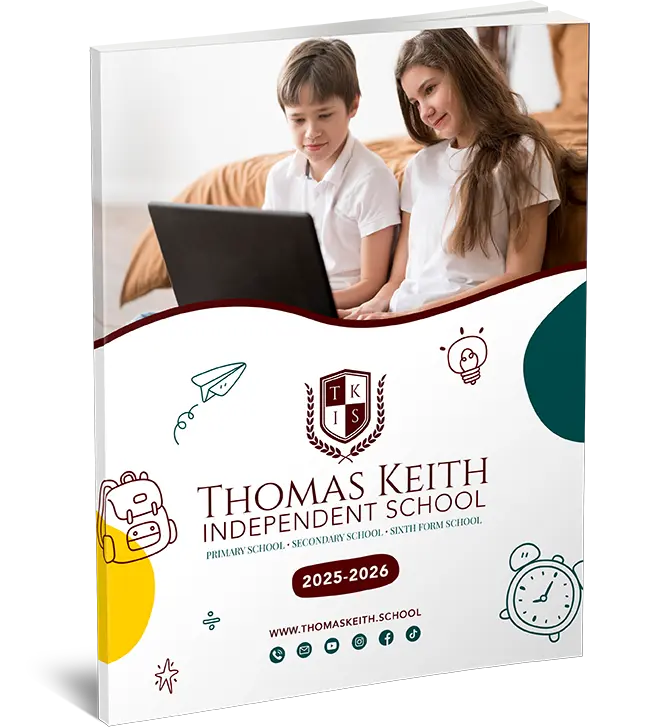
A Level Computer Science
A Level Computer Science: A Complete Reference
Designed to give students both academic and practical understanding of computing, A Level Computer Science is a cornerstone certification. This course covers computer operation, programming, and application of computers to address practical issues. Crucially in the digital age, it gives pupils abilities in computational thinking, problem-solving, and system building.
The structure of the A Level Computer Science course, its basic materials, tests, career paths, and an illustration of how colleges such as Thomas Keith Online Independent School run the course are investigated in this paper. Additionally offered for clarity will be FAQs and a thorough conclusion.
Why Study A Level Computer Science?
Students inclined in technology, programming, and logical problem-solving will find Level Computer Science appealing. Skills much sought in many different sectors, develop critical thinking, analytical ability, and creativity. Students who want to acquire a flexible skill set relevant to several disciplines and those preparing for a career in technology should find the qualification appropriate.
The syllabus is meant to:
Develop your knowledge of programming languages rather strongly.
Show how computing systems handle and manage data.
Add the theoretical ideas guiding contemporary computing.
Coursework and independent projects help you to acquire useful abilities.
In a technical setting, inspire invention and innovative problem-solving.

A Level Computer Science’s Essential Knowledge
Usually, the A-Level Computer Science syllabus separates theoretical from practical elements. The main topics covered in the course are compiled here:
- Programming and algorithms.
Students pick up languages including Python, Java, or C++. Programs meant to solve issues or automate tasks are developed using these languages.
Breaking down difficult issues into doable steps, developing algorithms, and testing answers help to solve them.
Students examine algorithm spatial and time efficiency.
- Data Structures
knowing and using linked lists, stacks, queues, trees, and arrays.
Using data structures to maximise program running performance.
- Theory of Computation
investigating the computing mathematical foundations.
Learning subjects like Boolean algebra, finite state automaton, and Turing machines.
Knowing how one applies theoretical models to practical computer challenges.
- Computer Networks
Architectural study of the interactions of memory, input/output devices, and CPU.
Knowing their part in hardware and software resource management helps one to operate systems.
Learning about local and wide area networks, internet protocols, and data transfer techniques helps one better understand.
- Database.
Designing and overseeing databases.
Structured Query Language (SQL) queries allow one to access and alter data.
- Digital Security
Knowing risks including phishing, hacking, and malware.
Learning protective techniques like safe coding methods, firewalls, and encryption.
- Machine learning and artificial intelligence
present ideas including training models and neural networks.
Investigating uses for artificial intelligence in fields including natural language processing and picture recognition.
- Legal and ethical factors
studying how computers shape society.
Knowing rules around intellectual property, cybersecurity, and data protection.
- Innovative Technologies
investigating avant-garde technologies including IoT (Internet of Things), blockchain, and quantum computers.
Knowing how newly developed technology affects sectors of business and society.
![]()
Assessment and Structure
The training is set up to mix practical application with theoretical study. Most A-Level Computer Science courses operate using this structure:
- Examines.
Exams are broken down into sections addressing theoretical ideas and problem-solving. As a matter of fact,
The first paper tests algorithm design and programming ability.
Paper 2 centres on theoretical ideas including databases, computer architecture, and networking.
- Real-world Project
A good amount of the course consists of a practical, non-exam assessment (NEA). Students create and apply a system to address a practical concern. This initiative lets them:
Show strong programming abilities.
Apply realistic scenario computational thinking.
Emphasise innovation and originality.
Analysis of Assessments
Exam 1: Programming and problem-solving; 50%
Exam 2: Systems, data structures, and theory of computation thirty per cent.
A thorough report covering the design, development, and testing of a system makes up 20%of Practical Projects.
Advantages of-Levell Computer Science
One benefit much from studying AA-level computer science:
Particularly highly transferable are programming, analytical thinking, and system design.
Pathways to professions in software development, data science, and IT administration are opened by this preparation.
Foundation for Higher Education: The course lays a strong basis for degrees in engineering, computer science, or allied fields.
Relevance: The abilities acquired are much sought after since technology is now included in all sectors.
Students develop a mindset of problem-solving whereby they approach tasks methodically and reason logically.
The training helps students to be resilient and flexible, so enabling them to manage the changing character of technology.
Example institution: Thomas Keith Online Independent School
A Level of Computer Science offered by the Thomas Keith Online Independent School is outstanding. Here is a summary of their methodology:
Course Administration
Students all around can attend the completely online program.
Recorded tutorials and live interactive seminars teach lessons.
The school’s platform consists of tools for independent learning, forums, and tests.
Staff Instruction
Teachers have years of knowledge in computer science.
They give each learner customised direction and encouragement to guarantee understanding of difficult ideas.
pragmatic concentration
Students finish mini-projects and programming assignments all during the semester.
Regular teacher comments help to closely monitor the practical project.
Evaluation and Commenting on Matters
To get pupils ready for tests, mock ones are run.
Detailed comments enable pupils to see their areas of strength and areas needing work.
Adjustability
The online structure lets students juggle other obligations with their education.
Resources are available around the clock to allow self-paced learning.
community involvement
Group projects, peer conversations, and cooperative learning exercises help the school to build a feeling of community.
FAQs
Q1: What qualifications qualify one for A-Level Computer Science?
A1: Mathematical and logical thinking should be rather clear for students. Although prior programming expertise is not required, fundamental coding skills might be beneficial.
Q2: Which programming languages teach?
A2: Though usually including Python, Java, and C++, the particular languages rely on the university.
Q3: Should I have no programming experience, may I still follow this course?
A3: A-Level Computer Science fits novices since it presents fundamental programming ideas.
Q4: The practical project is working how?
A4: A student finds a problem, plans a method to fix it, and then applies the answer. They file their method in a thorough report.
Q5: With this qualification, what job choices are open?
A5: Graduates can go into fields including artificial intelligence, data science, cybersecurity, IT management, and software development.
Q6: Apart from A-Level ICT, how is A-Level Computer Science unique?
A6: While ICT stresses employing technology for chores like data administration and communication, computer science focuses on programming and system architecture.
Q7: Do online courses equal efficacy with in-person instruction?
A7: Like those Thomas Keith Online Independent School offers, online courses offer dynamic and thorough learning opportunities like those found in in-person education offers.
Q8: With what tools will the course be conducted?
A8: Students require a computer with internet access, programming tools, and suggested textbooks depending on the course.
Q9: How may learners improve their experience?
A9: Students can work on their projects, compete in coding contests, and investigate online tutorials to advance their skills.
Q10: What topics are covered in A Level Computer Science?
A10: Programming, algorithms, data structures, networking, databases, software development, and computer architecture.
Q11: How is the course assessed?
A11: Written exams and practical assessments, depending on the exam board.
Q12: What programming languages are taught?
A12: Typically Python, Java, or Visual Basic, but it varies by school.
Q13: Are there prerequisites for A Level Computer Science?
A13: A strong foundation in maths and logical thinking helps. GCSE Computer Science is useful but not required.
Q14: What study resources are available?
A14: Textbooks, past papers, online courses, and programming platforms.
Q15: How do I prepare for the programming assessment?
A15: Practice coding regularly, work on projects, and review past papers.
Q16: What software is needed for the course?
A16: An IDE for programming (e.g., PyCharm, Visual Studio, or Eclipse). Check with your school.
Q17: How does A Level Computer Science differ from IT?
A17: Computer Science focuses on coding and theory, while IT is about using software and managing data.
Q18: Can I take Computer Science and IT together?
A18: Yes, but both are demanding, so plan your workload wisely.
Q19: What careers can this A Level lead to?
A19: Software development, cybersecurity, AI, data science, and university studies in computing.
![]()
career routes
A-Level Computer Science gets pupils ready for many career and academic paths:
- Higher education.
Degrees in artificial intelligence, data science, computer science, or software engineering.
- Certifications of Professionals
To boost employability, students might work for certifications in Microsoft, AWS, or CompTIA.
- Work
Entry-level positions include systems analyst, junior developer, or IT support technician.
Long-term professions in disciplines include software architecture, cybersecurity, and artificial intelligence development.
- Business ownership
Acquired skills will enable students to launch their own IT consulting companies or software development projects.
- Investigating and Developing Projects
Graduates help to progress in robotics, artificial intelligence, and other creative domains.
Conclusion
A-Level Computer Science provides an all-encompassing instruction in system design, computational thinking, and programming. It guarantees students are ready for either higher education or a career in technology by combining theoretical knowledge with useful practice. Thomas Keith Online Independent School is one of the institutions showing how flexible and supported online learning can provide high-quality education.
Anyone wishing to launch a career in technology or develop problem-solving abilities relevant to many sectors should find this course perfect. Focussing on both academic and practical knowledge, A-Level Computer Science offers a road map for digital era success.
Tag:A Levels





